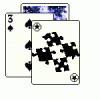Hi everyone,
Me and a friend are developing an RTS inspired by the Settlers and Anno series. We are both programmers and the technology is progressing great, but we are severly lacking in the art department. Ideally, we'd bring someone in, but the short story is that it's not really realistic at this point. This means we pretty much need to create some content ourselves.
Our game is top-down and the engine can handle both 2d and 3d. At the moment we are using 2d graphics hand drawn in Paint.NET. It kindof works, but it feels like I spend very much time on each asset with very mediocre results, in particular when it comes to lightning and shadows etc.
I'm currently tempted to switch to 3d, either going full 3d rendering, or just rendering models to sprites. Using the latter seems like the best option at this time since I can get consistent lightning/shading while not having to worry about things like polycounts, texture count etc. The game doesn't really benefit from full 3d anyway. Is this a good route 2016?
What are some tools for me to look into? Note that I'm not even aiming for AAA quality, simplicity is much more valued than capability etc. There is a very limited budget, maybe a few hundred dollars total, but free is preferred. I have an old Wacom tablet and a Surface Pro 2 with stylus if that matters.
I also know that there are a fair amount of free or cheap assets out there, but consistency is a major factor which is problematic with that route.







